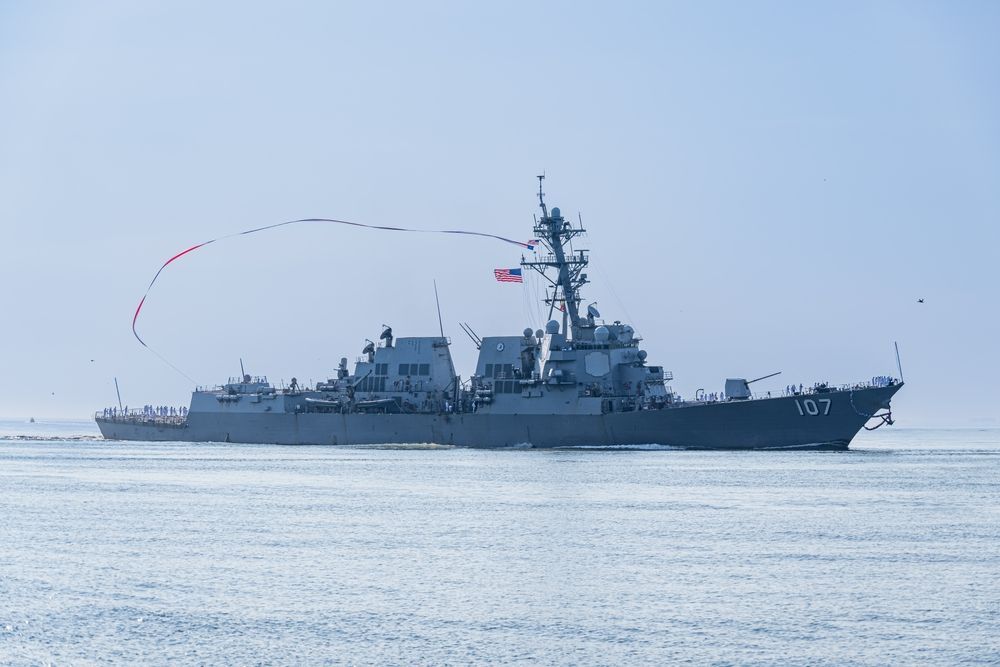Partners on the Front Line
Ryan Parada • September 24, 2025

The United States and the Dominican Republic are showing, in real time, how close friends can make the Caribbean safer. Over the past year, joint operations at sea and on land have tightened the vise on cocaine flows linked to Venezuelan networks that push contraband north through Hispaniola and onward to Puerto Rico and the United States mainland. In mid-September, Dominican authorities announced they had seized hundreds of packages of cocaine from a “go-fast” speedboat the U.S. Navy had disabled south of Isla Beata in an operation Dominican officials called historic for the depth of U.S.-Dominican coordination.
For decades, traffickers have exploited the geography of the Caribbean, launching loads from Colombia and Venezuela and staging through Haiti and the Dominican Republic before fragmenting shipments toward our shores. U.S. reporting has repeatedly identified Hispaniola as a transit point for South American cocaine, with smuggling modalities (air drops, go-fast boats, and mother-ship transfers) adapting to enforcement pressures.
What has changed today is the tempo and precision of joint action. Within the U.S. Southern Command (SOUTHCOM), the Joint Interagency Task Force South (JUATF-South) fuses U.S. military, Coast Guard, intelligence organizations, partner-nation inputs, Dominican Navy patrols, maritime patrol aircraft cues, and U.S. Coast Guard law enforcement detachments (LEDETs) on allied ships to detect, monitor, and intercept suspected cartel vessels. Recent anti-smuggling events near the Dominican Republic involved U.S. Navy destroyers working in concert with LEDETs and coalition ships, a model that speeds up enforcement and ensures contraband and suspects are handled under proper legal authorities.
The Dominican Republic’s role is central in this effort, not auxiliary.
First, geography make Dominican waters and airspace a crucial chokepoint — routes from Venezuela’s northern coast toward the Mona Passage, squeezing traffickers against radar, patrol, and post-security nets that Santo Domingo has strengthened in recent years.
Second, the Dominican Navy and anti-drug agencies are delivering measurable results. The country set a record in late 2024 with a single seizure of nearly 9.5 tons of cocaine at the Caucedo port and has continued to report large seizures linked to international cartel networks.
This Cooperation Pays Dividends for Both Dominicans and Americans
For the Dominican Republic, every kilogram kept off its beaches and out of its neighborhoods reduces the violence and corruption that these illicit markets create. It also safeguards the country’s reputation as a tourism and logistics hub, crucial for jobs and investment. Sustained joint operations signal to investors that the rule of law is being defended at seat and in the ports, aligning with the country’s broader push to professionalize security forces and harden infrastructure against criminal actions.
For the United States, pushing interdiction outward — closer to the launch points and transit lanes — keeps illicit cargoes away from our mainland and from our territories. The White House’s Caribbean Border Counternarcotics Strategy explicitly calls for integrated operations with Caribbean partners to stop flows bound for the East and Gulf Coasts. That is exactly what the U.S.-Dominican partnership is doing, with the added benefit of building partner capacity that endures beyond any single operation.
The economic relationship amplifies these security gains. Two-way trade is deep and diversified under the Central America Free Trade Agreement - Dominican Republic (CAFTA-DR). According to the U.S. Census Bureau, in goods trade alone, the United States ran a $5.5 billion surplus with the Dominican Republic in 2024 (about $13 billion in U.S. exports versus $7.5 billion in imports), reflecting strong sales of refined fuels, machinery, and agricultural products.
Critically, the partners are adapting to a changing threat picture. Venezuelan criminal factions have diversified smuggling tactics, shifting between coastal launches, riverine routes, and clandestine airstrips. That means better cues and faster handoffs, — from Dominican coastal radars to U.S. aircraft or from a U.S. destroyer to a Dominican boarding team — are the decisive edge. The joint disabling of the Isla Beata-area speedboat and subsequent Dominican seizure is an example of this playbook in action.
The headline is simple: the United States and the Dominican Republic are good friends that are getting even closer . . . and the results are visible in the numbers of arrests, kinetic strikes, safer ports, and resilient trade. As SOUTHCOM and Dominican forces expand joint patrols and exercises, cartels will face tighter margins and higher risks in the Caribbean. That outcome is good for families from Santo Domingo to San Juan to Miami, Washington, D.C., and beyond.
Security cooperation works best when it is co-owned. The Dominican Republic isn’t a junior partner; it is a capable frontline state with skin in the game, modernizing institutions, and a growing economy tied closely to the United States. Keeping Venezuelan drug cartels on their back foot is a shared mission as well as a shared success story.
Ryan Parada is a Partner and the Chief Government Affairs Officer for Connector, Inc. where he oversees both domestic and international portfolios. He is a policy expert for our clients in numerous areas, including national security, energy, and the tobacco industry.
